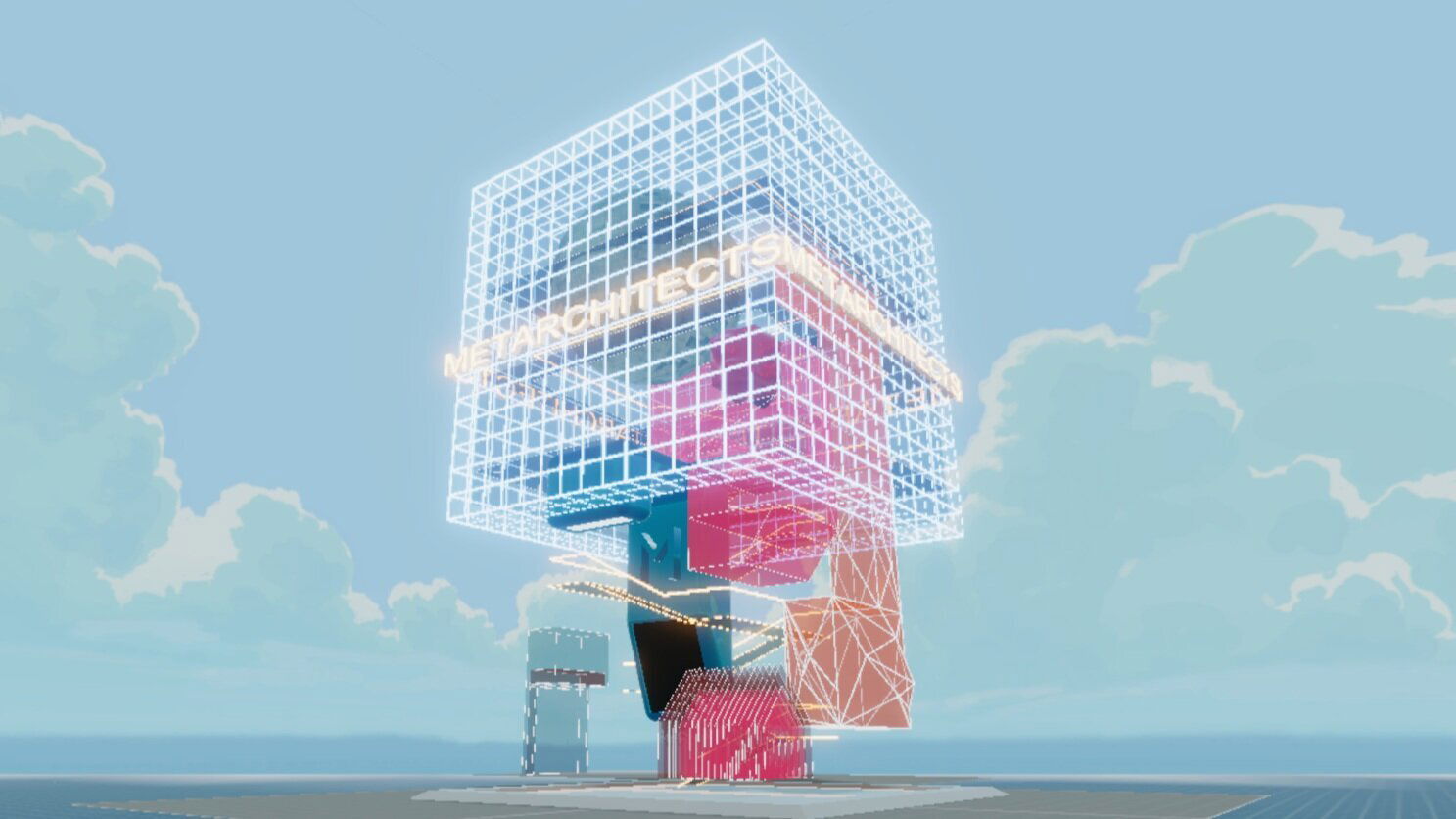
Let's admit it: we're all fascinated about the metaverse and the possibilities it holds, especially after Mark Zuckerberg unveiled it in October 2021. Have you considered how various components of the metaverse pervade the fields of architecture and design? This article aims to provide an answer to that question.
Foremost, what is the metaverse?
Projects that serve as foreshadowing
"Second Life" and "Roblox" were the first games to use the metaverse idea. Second Life is a virtual world game in which it granted players a second life. Users may explore breathtaking scenery, construct castles, woods, and spacecraft, create avatars, meet new people, shop, and engage in social activities. It was launched in 2003 and failed later because of hardware requirements, a lack of an intuitive interface, and other factors.
Philip Rosedale, the creator of Linden Lab's virtual online world of Second Life, will return to the project as a strategic consultant to assist with the metaverse debut. Roblox is an odd game based in a vast open environment with lots of games. Since its beginning in 2004, the platform has grown to encompass 47 million daily active users and 9.5 million developers who make money by creating "experiences," or user-created settings and games.
Facebook Meta:
The metaverse, according to Mark Zuckerberg, co-founder of the social media website Facebook and its parent company Meta (previously Facebook, Inc.), is the next phase in the evolution of social networking that intends to help individuals interact, build communities, and expand their businesses. It allows users to have immersive experiences in a virtual world where they may do whatever they want, including work, play, and socialize.
To represent this new area of his brand, he changed the name of his firm to "Meta." Zuckerberg considers the metaverse to be the start of a new age, predicting that it will reach 1 billion people in the next 10 years. This new world will not appear overnight, and architects as we know them today will be around for a long time.
Architects of the Metaverse:
It is impossible to deny that architects play a key role in the realization of inventive initiatives in the metaverse. People need locations in the metaverse, which causes the hiring of architects and designers to develop or improve these venues. However, as this new world expands, those we regard to be architects will most likely alter.
Because of the shift in architecture's aim, it's possible that we'll see a distinction between the titles of architect and meta architect emerge. Traditional architecture is important for providing shelter and enabling our daily activities, but meta architects will focus solely on form, geometry, and aesthetics.
Building for the metaverse may cause new talents and a shift of viewpoint for architects. Architects in the metaverse must undertake 3dmodeling and incorporate professional expertise from a variety of professions, including user interface, content design, character design, and even game design. And this will introduce a large number of individuals to the realm of architecture.
Architectural design teams might include a wider spectrum of game designers and programmers. This new-age architectural design will involve a larger number of individuals. Aside from that, architecture education will need to educate this next generation of architects a mix of digital media and 3D technologies. This results in a move away from architectural history, building processes, and materials.
By providing a completely immersive environment that does not need physical presence, the virtual metaverse setting would be used to strengthen the interaction between architecture students and their professors and instructors. We will offer a practical framework for establishing interactive interactions, which may be applied by any architectural school.
Furthermore, metaverse might also be a new frontier in architectural conservation. Since several buildings have collapsed by natural or man-made calamities, metaverse can be the platform where we preserve buildings inside this digital reality for the sake of future generations. It can be considered a way to express and explore the architectural heritage that allows users online to have an immersive interaction with the environment and each other.
Metaverse vs. actual architecture:
A metaverse and authentic architecture are not the same thing. The most significant distinction is the space's qualities. Regardless of how you engage with a location, it exists in a natural setting. In a virtual environment, however, each location has a rationale or a tale. That reason is one of the most important aspects of the virtual environment.
In addition, no real-life rules or restrictions such as gravity, structural stability, climatic issues, or physical laws will be at play in the metaverse. Therefore, architects have the freedom to overcome the existing conditions and create exceptional environments and authentic pieces of art. Not all five senses are included in the metaverse architecture.
As a result, the mood is created with fewer sources, and visual and auditory elements are emphasized more. Finally, whereas visualizations are made in present architecture to convey the ambience and features of the space to the audience prior to construction, in the metaverse, the entire environment is constructed with the same amount of time and effort spent just on visualization.
Metaverse's Advantages and Disadvantages in Architecture:
Metaverse is regarded as both beneficial and detrimental for architects. For instance, a digital twin of an actual project can be created in the virtual environment of the metaverse, in which clients have the authority to live there for a month to see if they enjoy the space before building it. Another benefit of this new realm for architecture would be the capacity it gives to people of all ages to make a name in the architecture industry. Comparing it to the most famous architects of the natural world who are pretty old because it takes years to build projects is a real benefit. However, as metaverse architects working in front of computer screens for long hours, it's harmful to our circadian rhythm in the long term.
New business opportunities
The world around us is changing, and all of this has been accelerated with the popularity of NFTs. Companies are creating digital assets with significant values since they are scarce, just as regular assets in life. Platforms like Somnium Space and Decentraland have already started selling virtual parcels of land that people can own and build upon, resulting in a surge in the digital real estate field. Demand in meta-architectural firms has recently surpassed supply, providing new opportunities for architects to take part and design in this new digital world.
Design companies in the realm of the virtual world
Zaha Hadid Architects
ILLUSORR is a design-focused metaverse that brings the physical and virtual worlds together to create unique landscapes and experiences. It aspires to reimagine the formerly fragmented virtual reality industry as an all-in-one platform that offers a fully immersive metaverse experience to businesses, creatives, and people.
Decentraland Architects

You should also check out the following articles:
- VR BUYING GUIDE AND THE BEST VR HEADSET FOR 2022
- A meta market opportunity: The metaverse could soon be worth $1 trillion
- Facebook wants to build a metaverse. Microsoft is creating something even more ambitious.
- How to succeed in the virtual reality world of tomorrow?
- Books you must read about virtual reality
- Best New Augmented Reality Books To Read In 2021
- US$ 4.7 Billion- The global augmented reality gaming market
- The smart glasses revolution is about to get real
- Consumer Brands Reinventing Marketing in the Metaverse
- Imagine Making Money in Rec Room
- The biggest AR and VR predictions of 2022
- Apple hired Meta's AR communications lead ahead of the 2022 launch of the headset.
- Who Will Be in Charge of the Metaverse?
- The Kingdom of Abraham: The first Jewish metaverse
- Gen Z are planning to spend thousands on cryptocurrency, NFTs and metaverse
- According to Goldman Sachs, the metaverse must run on blockchain
- What You Can Create With a Small Piece of Land in the Metaverse
- How To Buy Land In The Metaverse?



